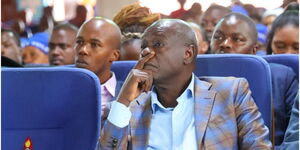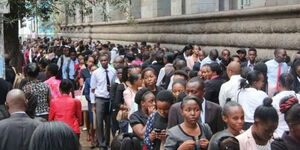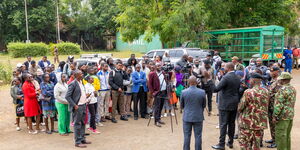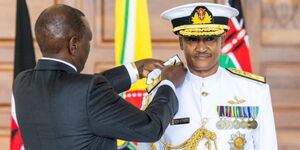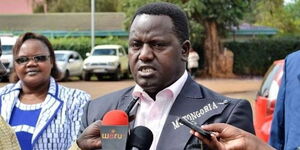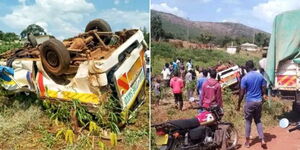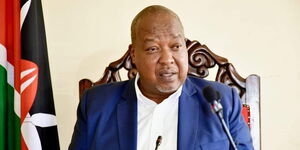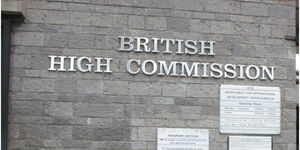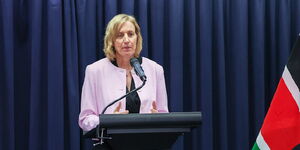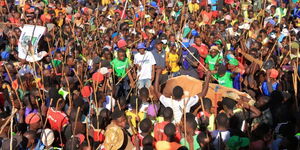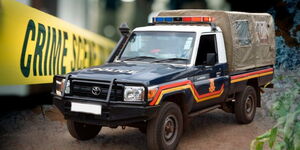For more than four decades, Raila Odinga has been a figure whose determination has greatly influenced the country's political trajectory. From his early days as a multiparty advocate under the one-party regime to his towering role as a statesman, Raila’s journey has been one of resilience.
Raila was born on January 7, 1945, in Maseno, Kisumu County. He is the son of the first Vice President of Kenya, Jaramogi Oginga Odinga. His own political journey was far from easy.
At the age of 48 years, Odinga was arrested on July 4, 1990, under President Daniel Moi's rule and detained under security regulations, which provided for the indefinite detention without charge or trial of anyone held to be a threat to the security of the state.
His experience behind bars would later fuel his relentless pursuit of democracy in the early 1990s.
Raila Political TBT Political moments
After nearly four decades of Kenya African National Union (KANU) dominance, Raila was among the political figures who were yearning for change.
Before the 2002 General Elections. Raila endorsed Mwai Kibaki as the opposition’s single presidential candidate, under the National Rainbow Coalition (NARC).
The coalition's victory effectively ended President Moi's 24-year rule and ushered in a new era of politics in the country.
Formation of ODM
Raila formed the Orange Democratic Movement (ODM) in 2005 after spearheading opposition against the constitutional referendum that opposed a draft seen as favouring presidential powers.
Under his leadership, this party has for years metamorphosed into one of the country's strongest and most influential parties.
The 2007 Post-Election Crisis
The 2007 General Elections were one of the country's most fiercely contested and controversial, and Raila was now going head-on against President Moi Kibaki under ODM.
When Kibaki was declared the winner, Kenya was plunged into chaos. Violence erupted across the country, leaving over 1,000 people dead and hundreds of thousands displaced.
Despite being aggrieved by the election outcomes, Raila agreed to engage in talks with Kibaki, which paved the way for the power-sharing agreement brokered by the then-United Nations Secretary-General Kofi Annan.
Following the grand coalition, Raila became the Prime Minister, working alongside President Kibaki to restore peace in the nation.
His term as the Prime Minister ended when the Grand Coalition Government came to an end following the 2013 General Elections.
2013 Elections
Raila never gave up. He contested the presidency under the Coalition for Reforms and Democracy (CORD) alongside running mate Kalonzo Musyoka.
However, after the election results were announced, Uhuru Kenyatta was declared the winner. Raila challenged the results of the elections at the Supreme Court, which upheld Uhuru's victory.
2017 General Elections
In the 2017 General Elections, Raila once again contested for the presidential seat under the National Super Alliance (NASA) coalition.
However, Uhuru Kenyatta was declared the winner. Raila went ahead and petitioned the Supreme Court to nullify the presidential election, citing procedural and technical flaws.
However, after the IEBC conducted a repeat election in October 2017, which Raila boycotted, citing a lack of reforms, political tensions remained high.
In a surprising turn of events, Raila chose reconciliation over rivalry, leading to the 2018 handshake with President Kenyatta that restored calm and unity across the nation.
2022 General Elections
In the 2022 General Election, Raila made his fifth bid for the presidency, this time under the Azimio la Umoja – One Kenya Coalition, to go head-on against President William Ruto.
After a tightly contested race, the IEBC declared William Ruto the winner. Raila rejected the results, alleging irregularities in the elections, and once again petitioned the Supreme Court. The court, however, upheld Ruto’s victory.
In March 2025, Raila Odinga and President William Ruto formally signed a Memorandum of Understanding (MoU) between their parties, ODM and UDA, that would see the two parties working together and forming a broad-based government.
Although some have described it as a “handshake”, leaders on both sides clarified that this arrangement is not a political coalition.

